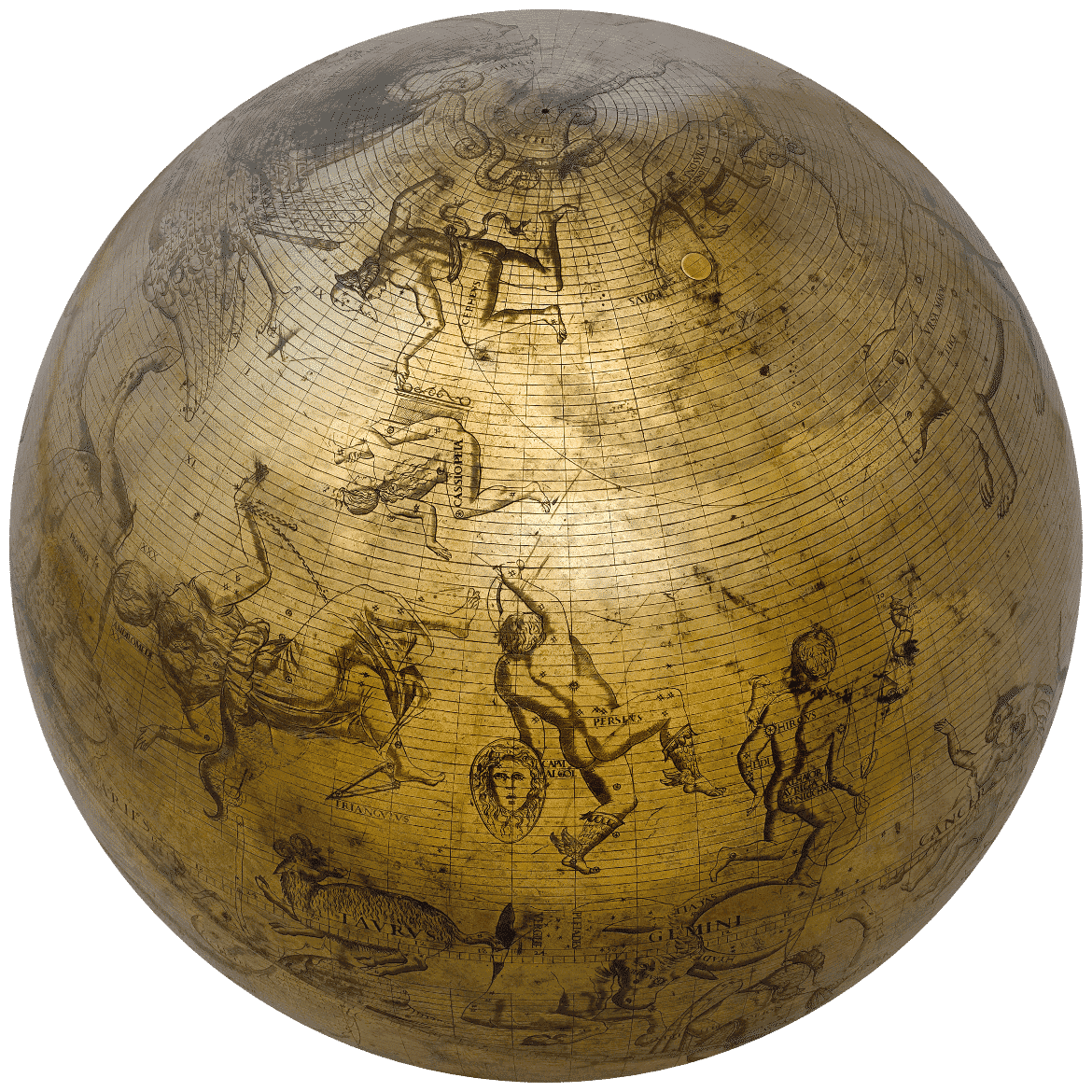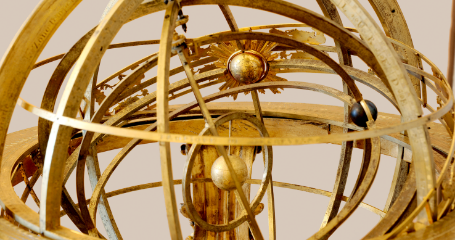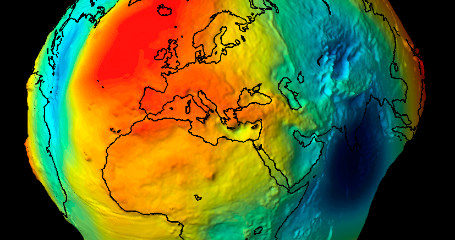The World of Spheres
2,500 years of the history
of representations of the Earth
and the universe.
With the support of



Highlights
A 16-stop tour that lays down a framework and looks beyond some popular beliefs.
01
16
What is the shape of the universe? Although mankind has now gone beyond the borders of the solar system, like astronomers of old, we are still reduced to speculation when it comes to the shape of the world.

02
16
In the earliest beginnings of scientific thought, spheres prevailed as models for the shapes of both the Earth and the universe. Armillary globes and spheres bear witness to that: at once objects of science and works of art, they are also symbols of power.

Representing the heavens
Since Antiquity, astronomers have observed the sky to understand and model our view of the world.

Representing the earth
From flat world maps in Medieval times to modern relief maps of the sea floor, a journey through the history of representations of the Earth.
04
16
The observation of the cyclical motions in the sky can create the impression that we are immobile, a fixed point in the center of a vast celestial sphere spinning around us. So the Greeks would theorize that the Earth was in the center of a spherical universe. For Pythagoras and his disciples, the universe was harmoniously arranged in the most perfect of shapes: the sphere.
05
16
In the fourth century B.C.E., Aristotle declared that the Earth was round, and gave the most convincing argument in favor of his assertion: the Earth cast a round shadow on the moon during lunar eclipses. The cosmos itself was conceived of as a sphere, the only geometric shape capable of representing the perfection of the heavens. The Greeks laid the foundations for physics and astronomy by modeling a geocentric world.

Vidéo
Eratosthenes’s calculation. Denis Savoie, Astronomer and Historian of Science
07
16
In the fifth century, after the fall of the Roman Empire, the astronomical sciences were largely abandoned in western Europe. Arab and Persian scholars translated Greek texts, enabling their knowledge to be passed on. Required for a strict observation of the rules of Islam, astronomy grew, spreading throughout the Arab world thanks to the works of Al-Biruni, AlHazen (al-Haythan), Al-Sufi (Azophi), and others.
08
16
From the eleventh century onwards, Greco-Arab knowledge spread out from Muslim Spain, paving the way for a scientific renaissance in the Christian west. Aristotle’s and Ptolemy’s models were rediscovered and adapted to Christian conceptions. The geocentric system was adopted as the most acceptable astronomical and theological model by the Church, which did not call the Earth’s spherical nature into question.

09
16
Later, during the Age of Discovery, the terrestrial globe was confirmed as a reduced model of the Earth. The exploration of new worlds empirically confirmed the Earth’s sphericity and clarified its geography. Globes became both tools to assist explorers, and the medium in which they could portray their most recent discoveries.

11
16
During the intellectual ferment of the Renaissance, Copernicus instigated a veritable scientific revolution: according to him, the Sun was at the center of the world and the planets spun around it! This fundamental change of perspective challenged mankind’s place in the universe and was not accepted without a struggle: decades later, Galileo would be condemned for having defended Copernicus’s hypothesis.
12
16
An armillary sphere is a mechanical model of the universe, used to show the apparent motions of the celestial bodies, the Sun and the Earth. In the 17th century, the first heliocentric (with the Earth orbiting the Sun) armillary spheres could be seen alongside the older geocentric (with the Sun orbiting the Earth) ones.


14
16
In the twentieth century came the discovery of relativity and the space-time continuum. Early in the century, Harlow Shapley demonstrated that our galaxy, the Milky Way, was spiral-shaped, and that our solar system was located at its outer edges. In 1929, Edwin Hubble discovered that the universe was expanding. Modeled by gravitation, woven by light, curved by matter, the universe became “elastic”.


The geoid
16
16
At present, we know that rather than being perfectly round, the Earth is actually somewhat lumpy. Artificial satellites have transformed our vision of both the Earth and the entire universe, neither one of which has bared all of its secrets yet.



































